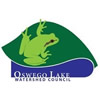Lake Oswego Urban Forest Committee members are out there connecting with trees… perhaps literally.
Summer living has not slowed down members in our community who have been volunteering a few Saturday mornings here and there to tend to the urban forest, specifically around the Adult Community Center and George Rogers Park.
Freeing trees from their English ivy fetters isn’t always easy work and OLWC is constantly in awe by the force with which Lake Oswego community members care and speak up for their natural areas.
In recognition of this hard work, please enjoy this whimsical conversation between one of our Urban Forest Committee members and a recently rescued Douglas-fir:
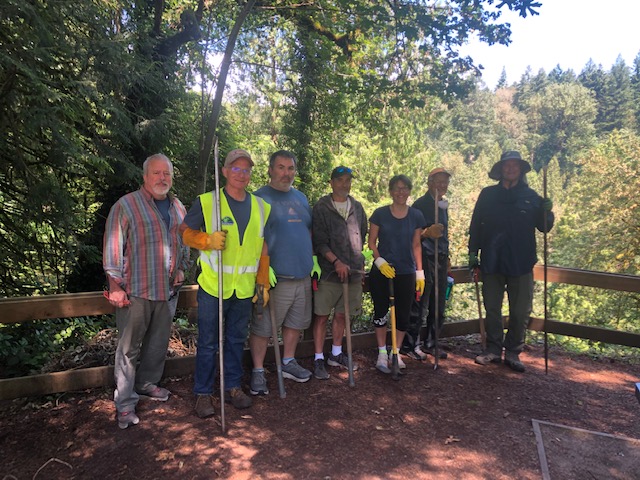
“I’m an evergreen conifer tree. The name your botanists gave me is Pseudotsuga menziesii. “Pseudotsuga” means “false hemlock.” “Menziesii” is a nod to your Scottish naturalist Archibald Menzies (1754-1842) who described me in 1791 on Vancouver Island. Another Scottish botanist, David Douglas (1799-1834), gave me my common name. But I have been around for 50 million years. I live from California to Canada and in China, Taiwan, Vietnam, Japan, and Hawaii. I start my life as an acorn and grow to 70 to 330 feet tall and may grow to 8 feet or more in diameter. My yellow or blue-green leaves are needles, soft and flat; and spiral around my branches. I reproduce by developing and dropping cones, which mature in one season. I can live 500 to over 1,300 years. I provide habitat to birds, insects, squirrels, and others. My bark develops over time with vertical fissures, dark and light brown; and, like my cousin Sequoiodeae (redwood), and not to brag, I am pretty darn fire resistant.
“Well, first, I wish to thank the people who pulled ivy from my bark. It felt great!
In Europe, the ivy there isn’t as much of an issue. Here, however, it is. Ivy can stunt my growth and add weight to me.
High climbing ivy, like a sail, can increase the force of wind and cause my branches to break. The ivy’s leaves can compete with my needles for sunlight. Its roots compete with mine for water. When I am stressed, I am more vulnerable to disease. I have no issue with ivy on the ground, mind you; I would just prefer it be away from me, say, 3 feet.
Oh, and please do not use herbicides to kill the ivy! Don’t believe the manufacturers who stay that stuff is safe. Those same manufacturers set the standard of care and regulate their own industry. I have witnessed your history; you seem to have forgotten it. So I remind you, be suspicious of those purveyors of poisons!”
Well, I like to think I am adaptable, and I am; but we all have our limits. Water usurpation certainly doesn’t help my growth and health.
Not all green is good if the green in question reduces biodiversity of other fauna. That is what the ivy does. But the idea here is not to eliminate it, but simply contain it so it doesn’t overtake everything.
Yes, I am most grateful; but much more needs to be done. We are rapidly losing biodiversity. People saturate our soils with poisons and blow-dry the life out of topsoil with leaf blowers. Ivy is a relatively minor problem compared to loss of trees and biodiversity from humanity’s various environmental assaults. I hope people stop cutting down mature trees, and stop using poisons and blowers, and let other species recover from this sustained assault we have been under.
My favorite Doug fir native partners are salal, Oregon grape, sword fern and snowberry.
No. I see myself, once I live my life, as habitat and nutrients for others. Now, I’ve read Shel Silverstein’s famous children’s book, The Giving Tree, where the protagonist tree gave and gave and gave until finally he was merely a stump to be sat upon – but to me, that’s about dysfunctional relationships and really should come with a warning.
You all seem to be in so much of a hurry, mainly chasing money, which isn’t even real. You are frittering your lives away missing out on what I experience daily, which is joy. I sometimes feel pity for people, as they often seem to regard themselves as separate and apart from Nature; seeing other life with an indifferent, exploitative, consumptive eye. “Father, forgive them, they know not what they do,” said one of your prophets before He too was cut down. So my advice is this: turn off your cell phones, and simply sit with me. Look at me, listen to my needles and branches dancing in a gentle wind, and try to feel how we all relate to this precious world, our common home.
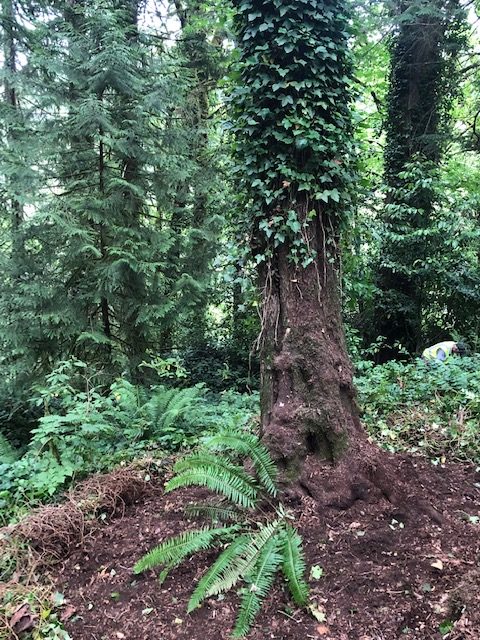
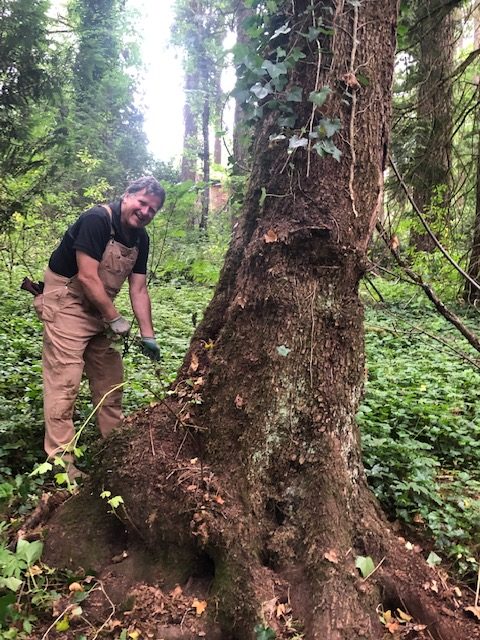
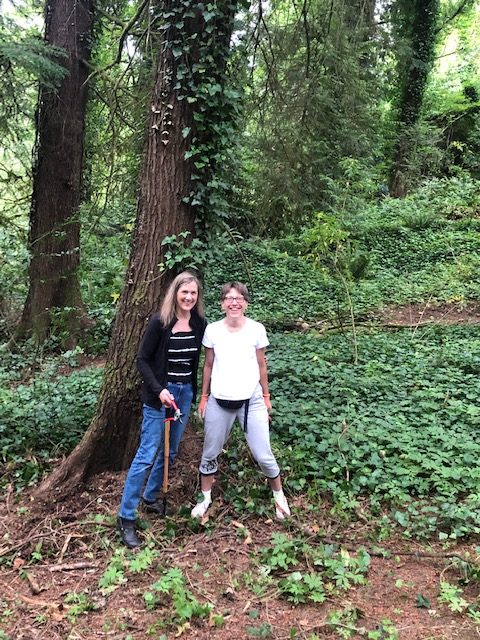
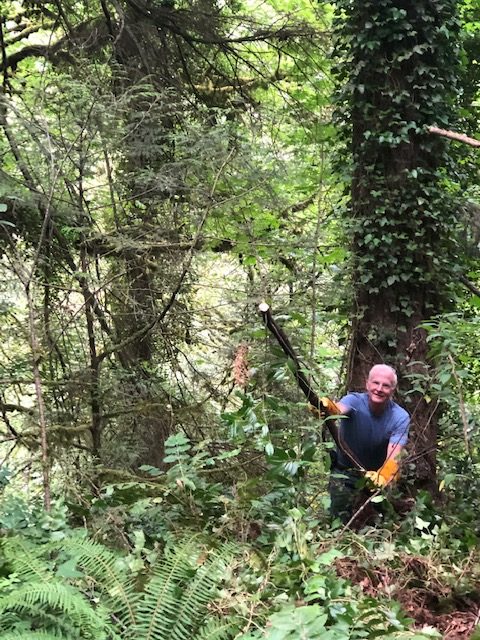
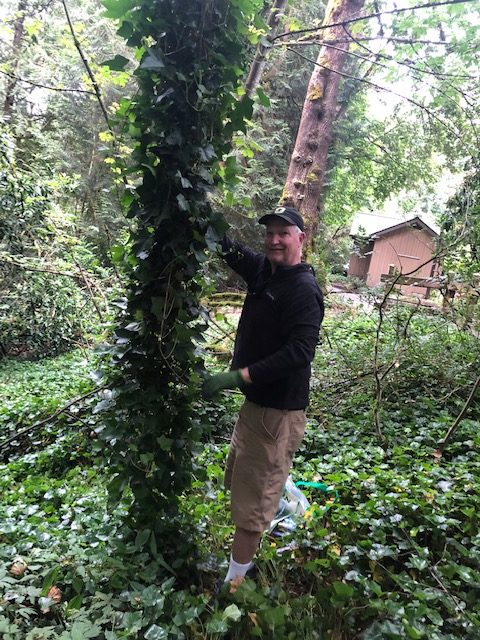
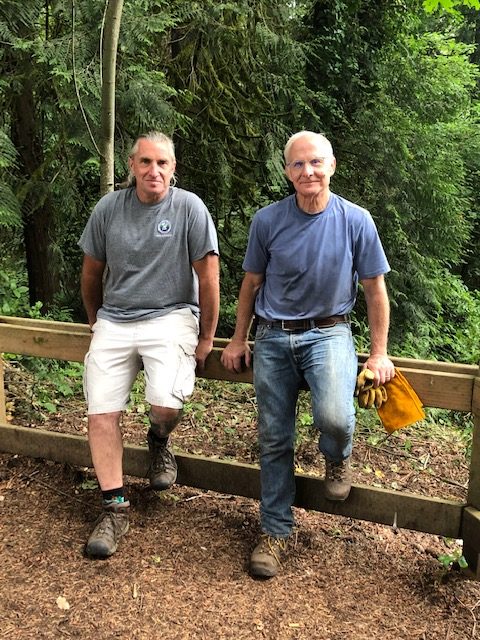
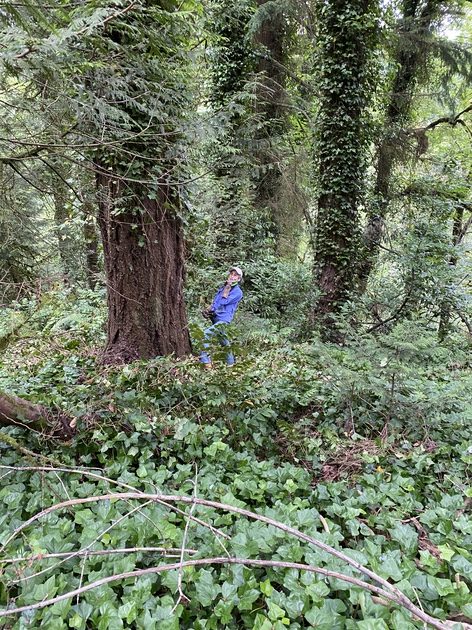
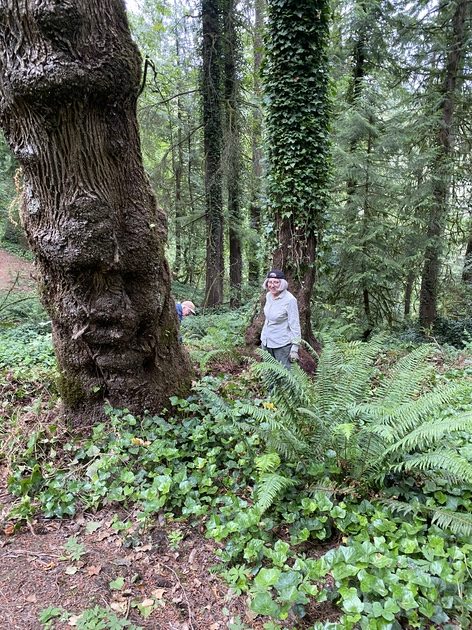
Thank you to tree ivy removal volunteers: Kathleen Wiens, Mike Buck, Betsy Wosko, Mark Puhlman, Nick Orfanakis, Lois Eckmann, Monica Delzeit, Howard Baldin, Eric Hirshberger and Suzanne Meckel.
Special thanks to Mike Buck and Betsy Wosko for roleplaying an interview with a Douglas-fir!
